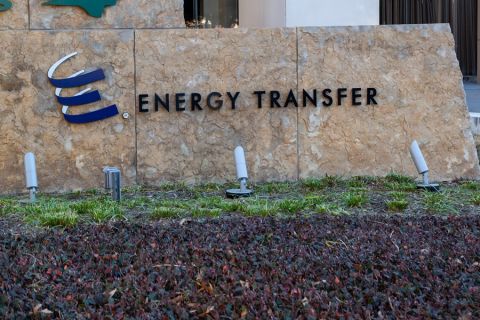Presented by:

Editor's note: This article appears in the special OTC edition of the E&P newsletter. Subscribe here.
Rapidly evolving regulatory frameworks for oil and gas decarbonization are changing risk-reward equations in every step of the carbon value chain. Hence, decarbonization presents a large opportunity to build on the industry's expertise in harsh operating environments, project management, processing, and supply and trading, while leveraging its proximity to industrial clusters and last-mile infrastructure.
These six trends are expected to play out over the coming decades as the world moves closer to net-zero status.
- Churning upstream portfolios to achieve the lowest possible carbon intensity and aligning midstream and downstream operations to deliver the lowest total life-cycle carbon footprint will be key to success. Operators will need to strike a delicate balance between maintaining adequate supplies of reliable and affordable energy as well as investor demands of higher returns from these new portfolios.
- Integrating greener feedstocks, like used cooking oil, into refining and recycled plastics into petrochemical processes will enable the downstream industry to capitalize on the net-zero opportunity while reducing the risk of having stranded assets. The increasing adoption of electric vehicles will alter elasticities demand of gasoline and diesel over the coming decades.
- Substituting gas- and diesel-fired equipment with electric equipment in drilling, production, heating, boiling, compressing and pumping will drive down absolute carbon emissions while lowering operating costs. The relative abundance of electric power and rapidly expanding transmission networks will enable end users to use solar and wind power in ever-increasing quantities through long-term power purchase agreements. Project economics will improve as the marginal cost of producing barrels onshore and offshore fall. Floating wind projects are poised to provide decarbonized power to offshore projects.
- Carbon capture utilization and storage technologies can potentially build on the progress made by EOR to reduce oil and gas operators’ emissions. Carbon utilization, in particular, will find applications ranging from roofing, sidewalks and concrete to waste-to-energy projects. Green oil and green LNG will provide the U.S. with new export opportunities in far-off markets that are seeking cleaner fuels for their power-generation industry. Tax incentives like the U.S.’s 45Q and spot markets for pricing carbon will be key to scaling up new technologies, as economies commit to achieving net-zero status. Carbon offsets and high demand for green fuels in shipping and aviation will also serve as tailwinds.
- Green hydrogen, which is hydrogen generated by the electrolysis of water using renewable power, is expected to become cheaper than most other forms of hydrogen over the coming decades. The falling marginal cost of green power, hydrogen’s properties as a vector, applications in power generation and transportation, and potentially high demand will incentivize developers to operate hybrid projects that generate both green power and green hydrogen. Large oil and gas operators are already moving into fixed and floating offshore wind, and turbine-makers are working on developing turbines with integrated electrolyzers. Co-locating electrolysis plants near gigawatt-scale wind and solar power projects will minimize transmission and distribution losses of green power, opening up a second profit-stream for green power projects. The development of spot markets will ensure transparent price discovery, and hydrogen-powered ships that deliver liquified hydrogen will expand its reach.
- Digital technologies will deliver unprecedented efficiency gains, lower maintenance costs and generate higher revenues for oil and gas by detecting and monetizing fugitive emissions of methane. Managing energy, power, midstream and refining projects using digital technologies and robotics will improve realizations and lower operating costs. Machine learning, 5G telecom, predictive maintenance, satellite-imaging and artificial intelligence will be integrated into almost every engineering, business, operational and supply chain process to improve visibility and minimize both emissions and losses.
These trends, among others, will establish a cycle of lowering emissions while providing clean, reliable and affordable energy. The industry's talent, resilience and commitment to excellence enables it to view decarbonization of oil and gas as a golden opportunity to expand its capabilities in the drive toward energy transition.
Recommended Reading
Report: Crescent Midstream Exploring $1.3B Sale
2024-04-23 - Sources say another company is considering $1.3B acquisition for Crescent Midstream’s facilities and pipelines focused on Louisiana and the Gulf of Mexico.
For Sale? Trans Mountain Pipeline Tentatively on the Market
2024-04-22 - Politics and tariffs may delay ownership transfer of the Trans Mountain Pipeline, which the Canadian government spent CA$34 billion to build.
Energy Transfer Announces Cash Distribution on Series I Units
2024-04-22 - Energy Transfer’s distribution will be payable May 15 to Series I unitholders of record by May 1.
Balticconnector Gas Pipeline Back in Operation After Damage
2024-04-22 - The Balticconnector subsea gas link between Estonia and Finland was severely damaged in October, hurting energy security and raising alarm bells in the wider region.



